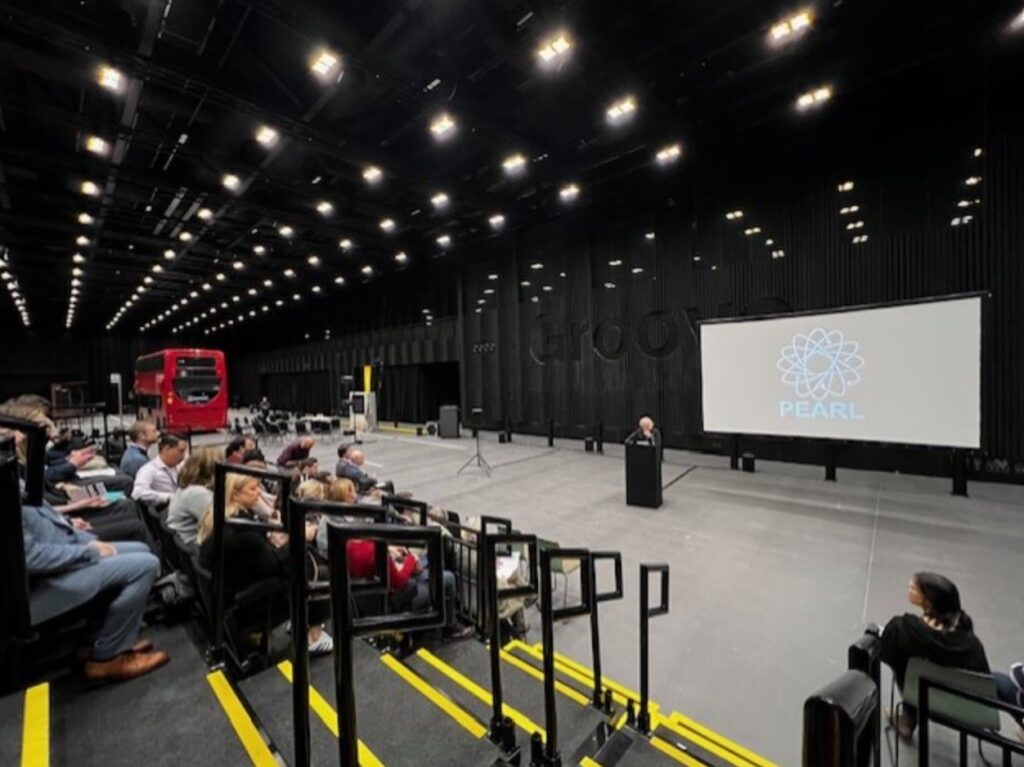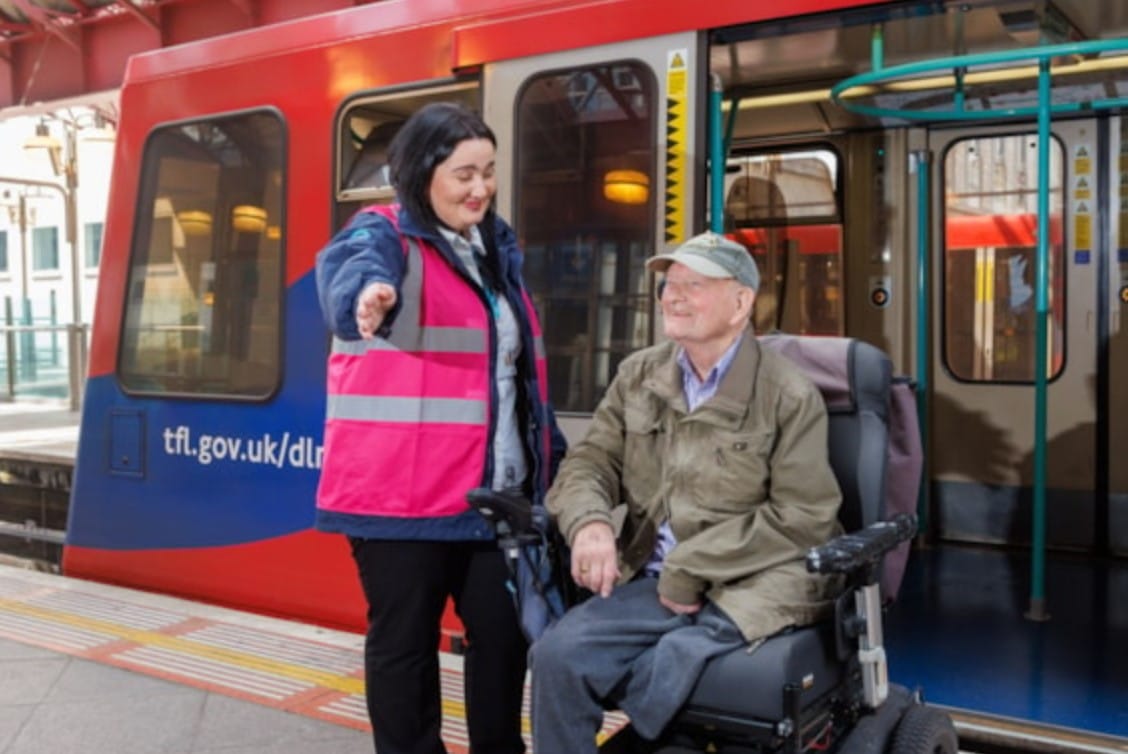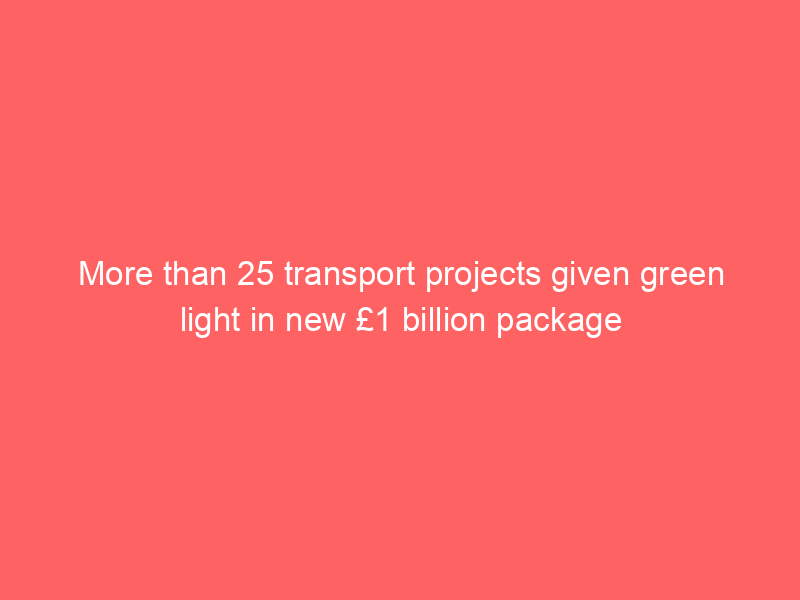By Milda Manomaityte, Innovation Director, Railway Industry Association
UCL Pearson Environment Advance Research Lab, otherwise known as PEARL, hosted a railway industry day on Monday 15 April. The aim of the event was to showcase research and testing capabilities of this newest UK Rail Research and Innovation Network (UKRRIN) member to key railway stakeholders who might need a space to test how people are interacting with their environment and technologies.
Nick Tyler, UCL PEARL Director, welcomed attendees with, at least for me, a first multi-experience presentation, involving movement, sound, light and the traditional form of power point.
But before we go deeper into the capabilities of PEARL, I will share some interesting insights from Lord Toby Harris, the Chair of the National Preparedness Commission, giving the attendees some context for the conversations around railway resilience. The Commission was conceived to promote policies and actions to help the UK be significantly better prepared to avoid, mitigate, respond to, and recover from major shocks, threats and challenges.
Lord Harris painted the current situation within the acronym TUNA, which describes strategic challenges in the terms of Turbulent, Uncertain, Novel, Ambiguous. COVID has highlighted the speed of how quickly the societal norms can unravel faced by a global crisis – within days people worked from home, wore masks and stopped shaking hands.
We are currently experiencing a number of challenges as a global society, including the cost of living crisis, wars, and the upcoming elections in 64 countries involving more than half of world’s population. Coupled with extreme weather events and the incredible pace of technological developments, TUNA feels like the right sentiment to use.
Lord Harris also talked about the National Risk Register, identifying 89 risks, most of which could have a potential to impact the railways and its users. Lord Harris finished his presentation with a cautionary word inviting the railway sector professionals to consider various interdependencies of these risks and be better prepared for the unexpected, by investing in preparedness and resilience.
Now back to Nick and his multi-dimensional presentation. Nick introduced PEARL saying this is the place to discover what elements of the railway work best with people, and how people can work best with the railway.
“Being here it’s a bit like sitting inside your own brain”, Nick said. And this is not just because the facility can create the pitch blackness, but it allows to measure how human brain reacts to environmental changes as well as changes of the perception. For example, despite being in a huge hangar, surrounded by a lot of empty space, it felt like being is a small room as the sound didn’t echo. This was demonstrated very clearly when PEARL technicians changed the acoustic elements to sound more like being in a cathedral, the Cathedral of St ÉSenne in France to be precise.
“You have placed a sense of height to the space that did not exist before, either in your mind or in reality. This is because we have changed the reverberation from one second to seven seconds. We have also changed the way in which sound seems to be reflected and absorbed in such a different space. So, what arrives in your ears is different – that’s the physics – this is not important but the perceptual shift it”, Nick explained the change.
Nick continued his presentation by moving the attendees from the seated auditorium to the raised railway platform, where the effects of sound and light were demonstrated, specifically how it feels to sense a train approaching at speed in pitch darkness, or whether you can actually see a person in hi-vis working on the track in these conditions.
“If we had no light from the station at all, and just relied on some starlight, how much could you see? The way standards are set means that this is not considered, yet it is the key for how lighting works,” Nick highlighted.
PEARL team have truly put together a light show, literally, highlighting the fact that its lights are made of 12 colours, coming as close as possible to the spectrum of human eyes.
The event ended with a discussion around four challenges, focusing on how research and testing facilities, such as PEARL, can support the industry is resolving some of its most pressing issues.
I mentioned in the beginning of this article that PEARL is part of the UKRRIN family, of which RIA is a founding member. The discussions suggested the need to raise awareness of not only the existence of these facilities, but also how through collaboration we can maximise access to testing, enabling better adoption of innovation.
RIA is leading industry’s Unlocking Innovation programme, designed to do just that – to promote UK rail’s innovation capabilities, connect people with challenges and people with solutions and to promote research and development opportunities.
Thanks to the programme’s partners – Network Rail, UKRRIN and Telent, we are able to host open for all and free events and you can sign up for them at RIA’s website www.riagb.org.uk.
Photo credit: Milda Manomaityte


